Fresh and incredibly flavourful miso pesto pasta! This quick and easy dish requires only 6 ingredients and 20 minutes, making it the perfect weeknight meal.
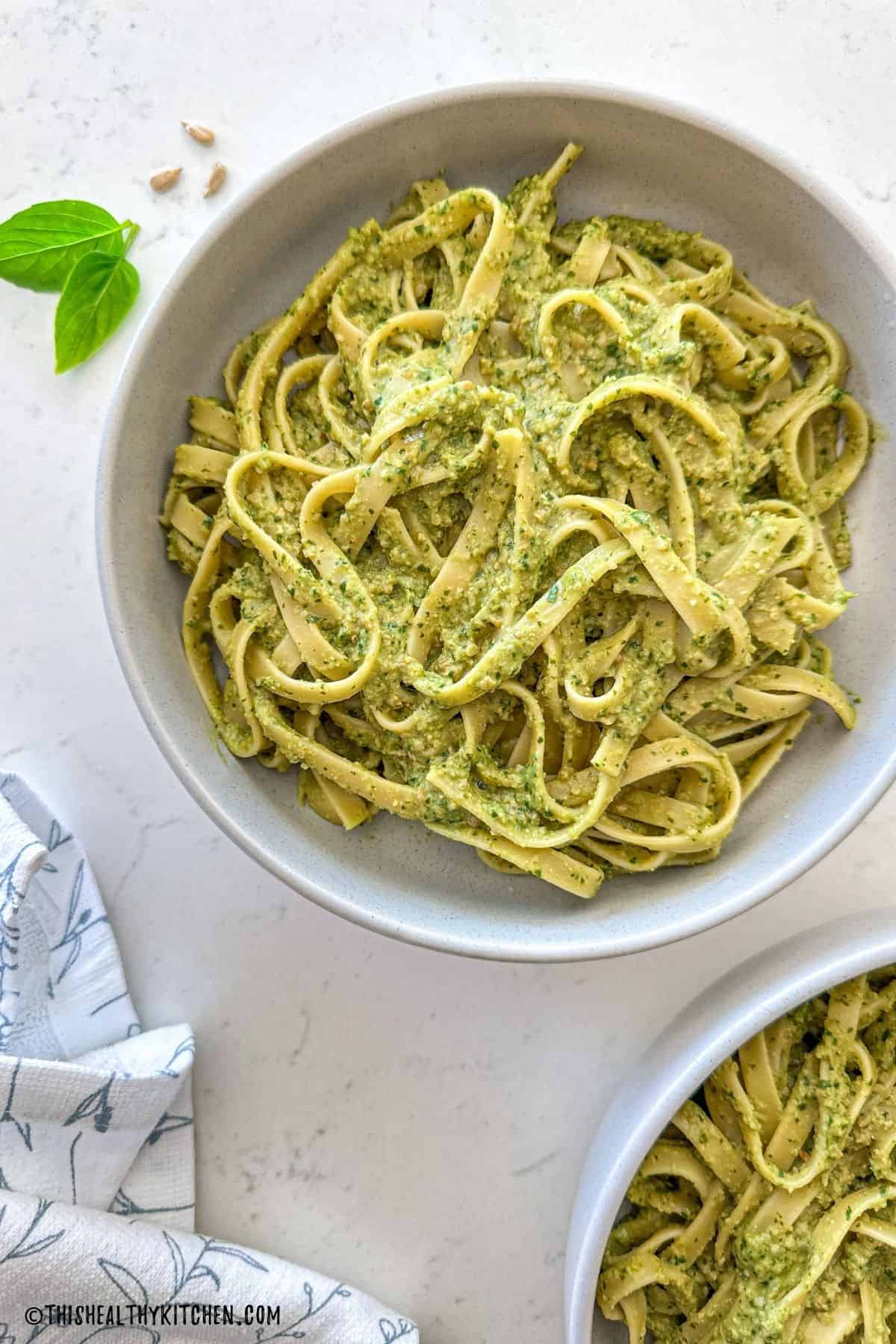
Make this miso pesto when basil is fresh and in season for a fantastic meal in the spring and summer. (Or make it anytime, because it’s too good to miss.)
Like my lentil pesto, pistachio pesto, and nut-free pestos, this miso pesto is oil-free, easy to make, and so delicious.
Jump to:
Ingredients + Substitutions
Here’s everything you’ll need to make this delicious miso pesto recipe.
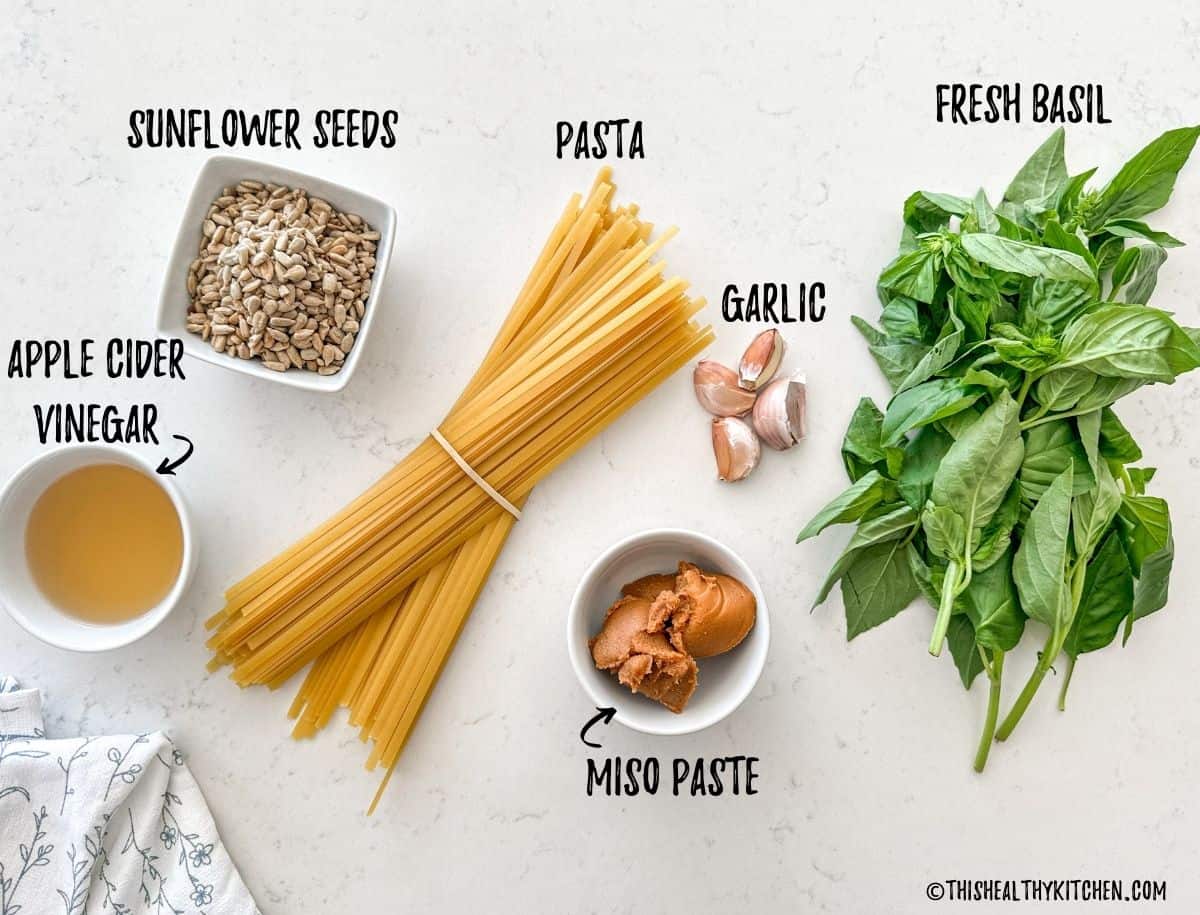
- Basil: Use fresh basil, you cannot use dried herbs to make pesto. If you’d like, you may use fresh parsley or cilantro leaves in its place.
- Miso paste: I like white miso paste best for this one. It adds a salty, umami flavour to the pesto.
- Garlic: Again, choose fresh garlic only for the best flavour.
- Sunflower seeds: Use UNSALTED sunflower seeds since the miso paste is also salty and the dish will be too salty otherwise. You may also use raw pumpkin seeds/pepitas, walnuts, pecans, pine nuts, or another nut or seed of your choice.
- Apple cider vinegar: You may also use fresh lemon juice if preferred.
- Pasta: Choose any of your favourite shapes. I’m using fettuccini this time, but spaghetti, penne, rotini, or another shape is fine. Choose certified gluten-free pasta if needed.
Instructions
(This is a summary with step by step photos, full recipe measurements and instructions are in the recipe card below.)
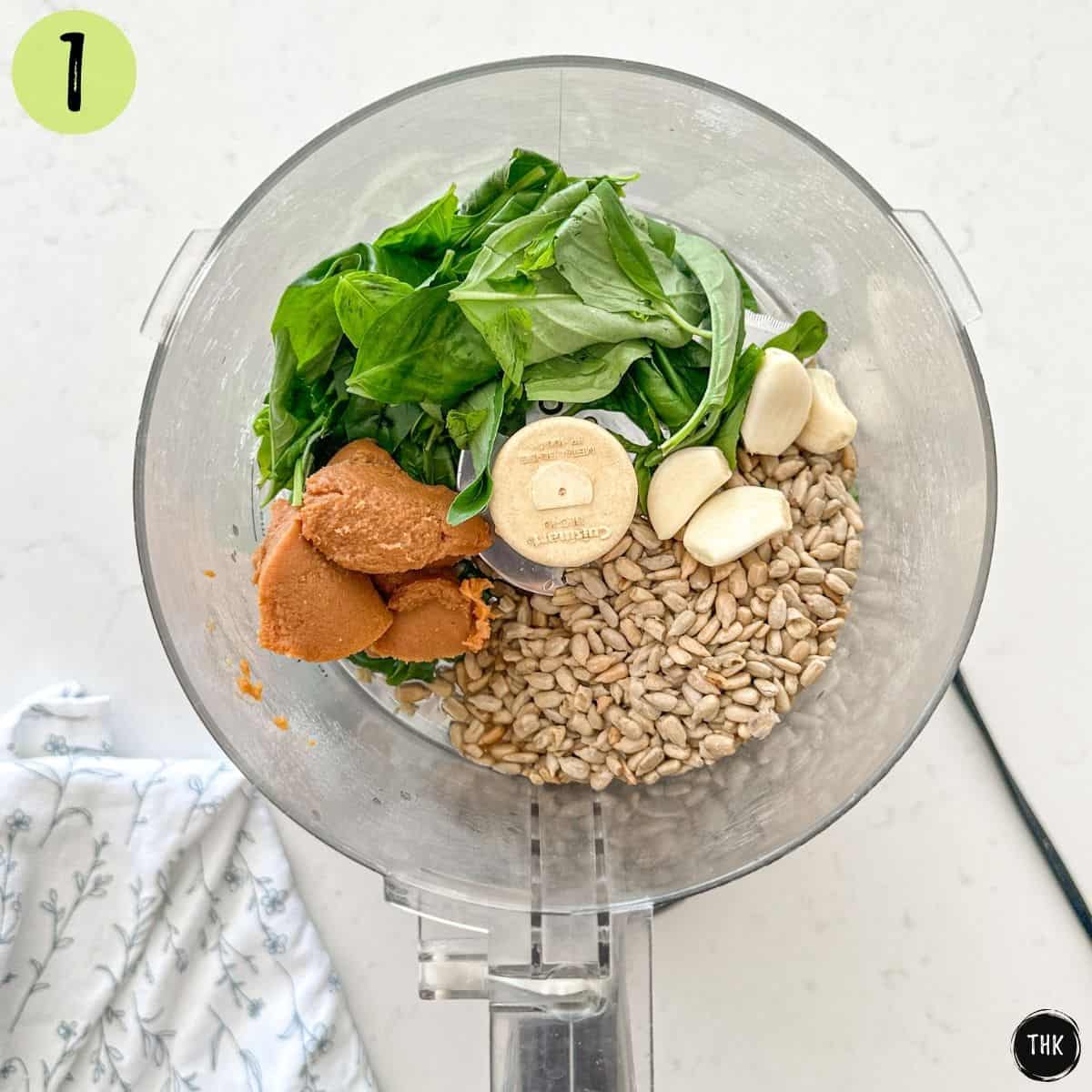
Add all the pesto ingredients to your food processor.
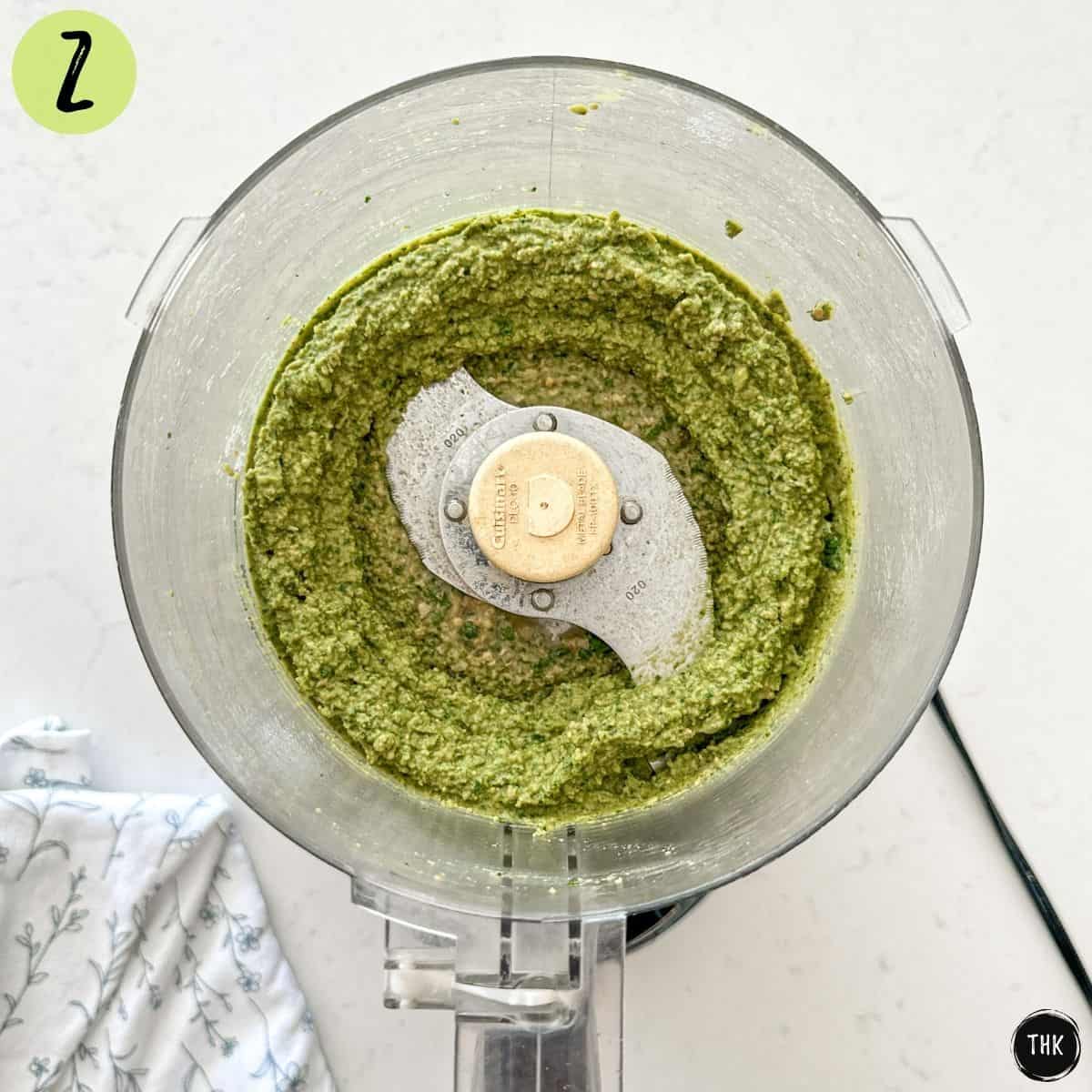
Blend until combined and evenly processed.
Toss the miso pesto with your cooked pasta, adding some reserved starchy water to thin out the sauce to your taste.
Then serve topped with vegan parmesan cheese, chilli flakes, fresh basil, or any topping you’d like.

Variations
- Make it spicy: Add red pepper flakes, black pepper, or hot sauce to your bowl, or directly into the pesto.
- Add veggies: Try roasted broccoli, cauliflower, and peppers. Or stir a couple of handfuls of baby spinach into the pasta while still hot so it wilts.
- Extra protein: Add a can of chickpeas to the dish (or use previously cooked from dried chickpeas). Or try it with lentils or black beans.
Equipment
I use this Cusinart food processor to make my miso pesto. You may also use a blender if you don’t have a food processor. However, I find it easier to transfer the mixture from the bowl of a food processor.
Storage
Leftovers can be refrigerated in an airtight container for up to 3 days and reheated on the stovetop.
I don’t recommend freezing pasta. However, if you make batches of the miso pesto, you may freeze it in small/portioned jars or freezer-safe airtight containers for up to 6 months.
Expert Tips
- Use UNSALTED sunflower seeds to prevent the dish from being too salty.
- Salt your cooking water. Make sure to add enough salt to your pot of water for the best texture and flavour. Here’s a handy guide to help you salt your water perfectly each time.
- Cook to ‘al dente’ texture. Do not overcook! Al dente means that the pasta is still firm once cooked, giving optimal texture in every bite. To ensure it does not overcook, start taste testing a few minutes before the package says it will be ready. It should be tender, but still firm.
- Reserve some starchy cooking water before draining your pasta to thin out the miso pesto sauce to your taste.
More delicious pesto recipes
If you tried this recipe, please let me know in the comments below. I always love hearing from you! Don’t forget to Subscribe to This Healthy Kitchen to be among the first to get my new recipes! You can also FOLLOW ME on Facebook, Instagram, Pinterest, and YouTube to see more delicious food.
Buon appetito
Rosa
📖 Recipe
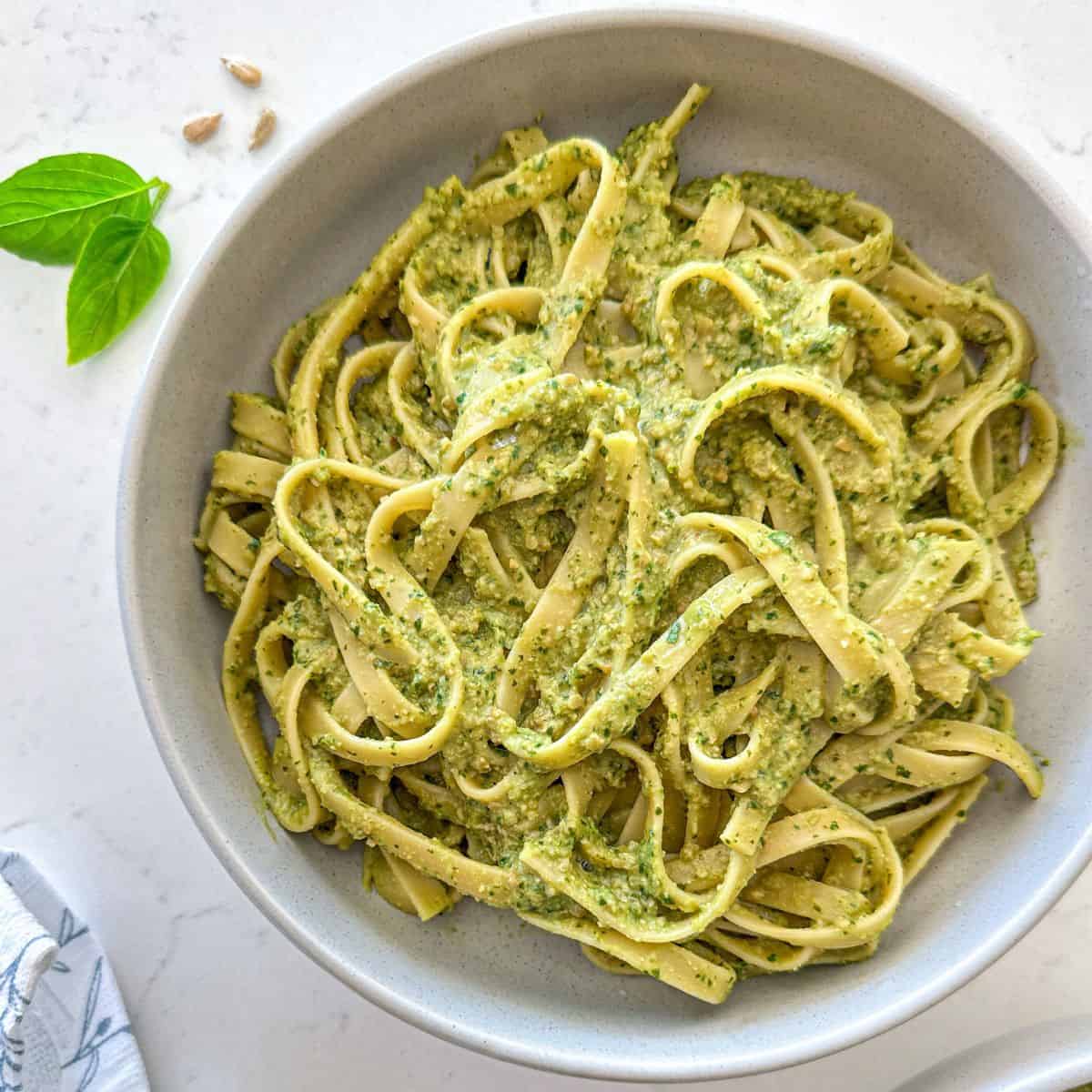
Equipment
Ingredients
- 1.5 cups fresh basil leaves gently packed
- ½ cup unsalted sunflower seeds
- 3-4 cloves garlic
- 3 tablespoons white miso paste
- 3 tablespoons apple cider vinegar
- 2-4 tablespoons filtered water if needed
- ½ pound fettuccini or pasta shape of choice
Instructions
- Bring a large pot of salted water to a boil and cook your pasta according to package directions for 'al dente' pasta. If there are no package directions for 'al dente' undercook the pasta by 1-2 minutes.
- Reserve ½ cup of the pasta water, drain the pasta, return it to the pot and set it aside.
- Meanwhile, add all the pesto ingredients to your food processor, blending until combined and adding 2-4 tablespoons of water, if needed.
- Toss the cooked pasta with the miso pesto, adding as much of the reserved pasta water as you'd like to thin out the sauce to your taste. Then serve.
Notes
- Use UNSALTED sunflower seeds to prevent the dish from being too salty.
- Salt your cooking water. Make sure to add enough salt to your pot of water for the best texture and flavour. Here’s a handy guide to help you salt your water perfectly each time.
- Cook to ‘al dente’ texture. Do not overcook! Al dente means that the pasta is still firm once cooked, giving optimal texture in every bite. To ensure it does not overcook, start taste testing a few minutes before the package says it will be ready. It should be tender, but still firm.
- Reserve some starchy cooking water before draining your pasta to thin out the miso pesto sauce to your taste.


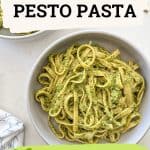
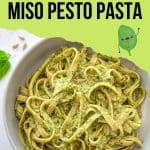

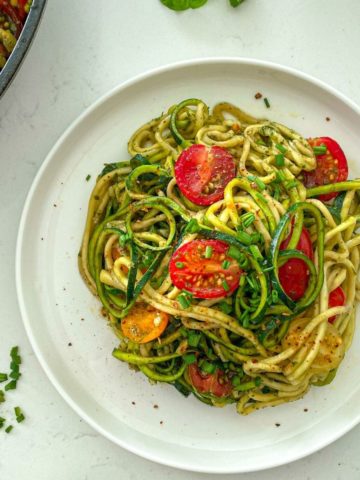
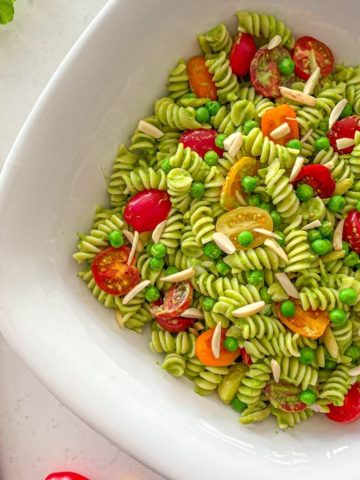
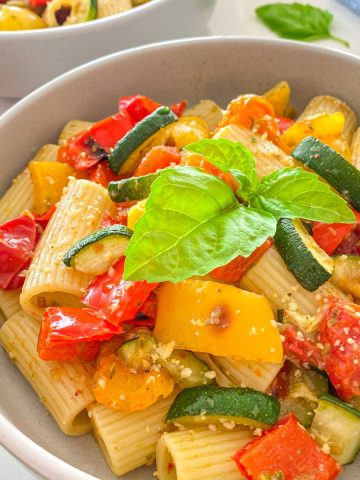
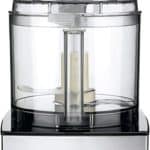
Barbara says
Delicious! Best no oil basil pesto pasta. Very flavorful. Next time use 12oz linguini…there is enough sauce and that amount would serve 4. Hubby loves pasta and goes back for seconds!
Rosa says
So happy you both enjoyed it, Barbara!
in2insight says
It could just be our taste buds, yet for us the ACV was overwhelming and beat out other flavors.
Perhaps less would have saved the dish.
Loved the inventive pesto with miso and sunflower seeds.
Owen says
Question- 1 1/2 cups basil leaves. Is that packed or loose?
Rosa says
It should be gently packed, enjoy! 🙂